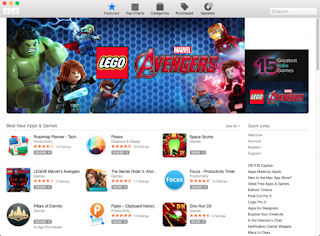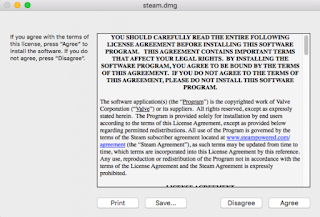Mac OS is the computer operating system for Apple Computer's Macintosh line of personal computers and workstations. A popular feature of its latest version, Mac OS X , is a desktop interface with some 3-D appearance characteristics. OS X has a modular design intended to make it easier to add new features to the operating system in the future. It runs UNIX applications as well as older Mac applications.
Mac OS comes with Apple Computer's iMac and Power Macintosh line of computers.
How To Create a New User Account On The Mac
- Click on the Apple icon in the upper left corner of your Mac's screen.
- Select System Preferences from the drop down menu.
- Click on Users & Groups.
- Click the lock in the lower left corner to make changes.
- Type your administrator password.
- Click Unlock.
- Click the Add user account button (it looks like a plus, underneath the list of user accounts). .
- Set the new user's account type.
- See the notes above to understand the difference between administrator, standard, managed with parental controls, sharing only and group. You can enable administrator access and even enable parental controls after an account has been created, so if you're not sure what to set, don't panic. .
- Enter a full name for the user.
- Enter an account name.
- This account can be linked to an iCloud account, which will enable the user to log in using their own Apple ID. This can make cloud sharing, syncing with iOS devices and other Macs easier.
- You can set up a separate password, which you'll be required to input and verify. You can also enter a hint in case the user (or you) forget the password.
- When you're finished, click the Create User button.
How To Delete A User Account
- Click on the Apple icon in the upper left corner of your Mac's screen.
- Select System Preferences from the drop down menu.
- Click on Users & Groups.
- Click the lock in the lower left corner to make changes.
- Type your administrator password.
- Click Unlock.
- Click the Remove user account button (it looks like a minus, underneath the list of user accounts).
How To Create A Folder On A Mac Computer
Navigate to the desktop of your Mac. The word "Finder" will be displayed at the top left corner of the monitor beside the apple icon once you're there — if it says anything else, like "Safari" or "Word," you are technically still in that program, so just click on an empty space on your desktop.
Click the word "File" beside "Finder."
Click "New Folder" from the dropdown menu.
And that's it, new folder created.
Approach #2
Navigate to the desktop of your Mac.
Right click on your mouse, or use two fingers held close together to create a right click on your trackpad.
Click "New Folder" in the menu that appears.
How To Edit And Add Files To A Folder On A Mac
Once your new folder is created, it will be called "untitled folder." To change its name, you can either do a slow double click on its name, or you can right click on the folder and then choose "Rename."
To move files into the folder, simply drag them to it by clicking on the file in question and maneuvering it over the folder. And don't forget that you can use these same techniques to create a new folder within the folder. And within that folder. And down deeper and deeper it goes.
If you ever want to delete a folder, you can either drag it directly to the icon for your computer's Trash, or right click on the folder and select "Move to Trash" from the menu that appears.
How To Install Apps In Mac OS X
If you're fairly new to a Mac and want to be able to install applications, there are a couple of ways to do it. You can use the Mac App Store, which combines the download and installation into a single step. Or you can download programs from the web and then install them. Here's how to use both methods.
Install from the Mac App Store
Click on the price located beneath the app's star rating. If an app is free, the button will read Get.
Click on the green Install App button that appears. Enter your Apple ID password if prompted.
The app you just downloaded from the Mac App Store should automatically show up in Launchpad, ready for you to open with a single click.
Install from the Web
If you’ve downloaded a program straight from the Web, however, the installation process becomes slightly more complicated. If the file you've downloaded ends with the .zip extension, just double-click the file to unpack it.
If the file you've downloaded is a disk image (these end with the .dmg extension), you’ll first have to "mount" the image onto your machine.
1. Click on the Finder icon at the bottom left of the screen.
2. Click Downloads on the left side of the window.
Double-click the downloaded file. If you get an error message that says the program "can't be opened because it wasn't downloaded from the Mac App Store," right-click the downloaded file and select Open.
4. Follow the on-screen instructions.
Once the file is mounted, it will appear as a device under Devices in the Finder. Once the application has been successfully installed, you can uninstall the .dmg file by clicking the eject button next to its name in the Finder.
5. Add the application to the Dock by dragging its icon from the Applications folder in the Finder to Dock. You can do the same thing from the Launchpad.
Shortcuts for Mac
Command + X: Cut selected text and copy it.
Command + C: Copy selected text.
Command + V: Paste copied text.
Command + Z: Undo previous command.
Command + A: Select all items.
Command + F: Open Find window to search text.
Command + H: Hide windows of the front app.
Command + N: Open a new document or window.
Command + O: Open a selected item.
Command + P: Print current document.
Command + S: Save current document.
Command + W: Close front window.
Command + Q: Quit the app.
Command + M: Minimize the front window to the Dock.
Command + Spacebar: Open Spotlight search field.
Command + Tab: Switch between open apps.
Command + B: Bold selected text.
Command + I: Italicize selected text.
Command + U: Underline selected text.
Command + Semicolon (;): Find misspelled words in document.
Option + Command + Esc: Choose an app to force quit.
Shift + Command + Tilde (~): Switch between open windows.
Shift + Command + 3: Take a screenshot.
Fn + Up Arrow: Scroll up one page.
Fn + Down Arrow: Scroll down one page.
Fn + Left Arrow: Scroll to beginning of document.
Fn + Right Arrow: Scroll to end of document.















